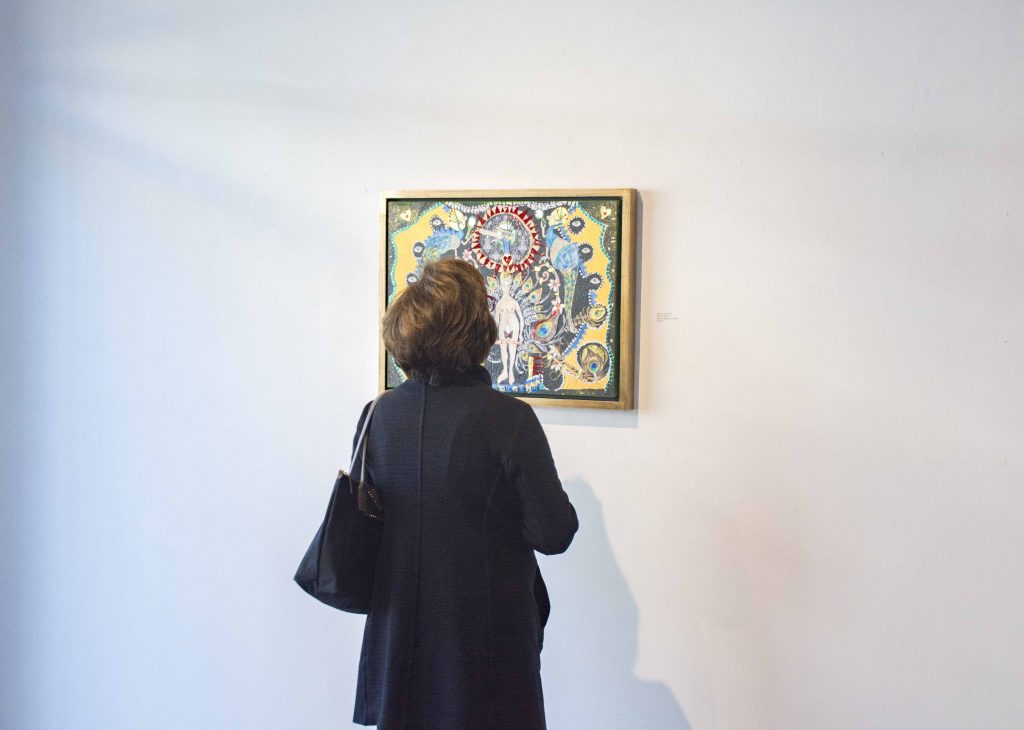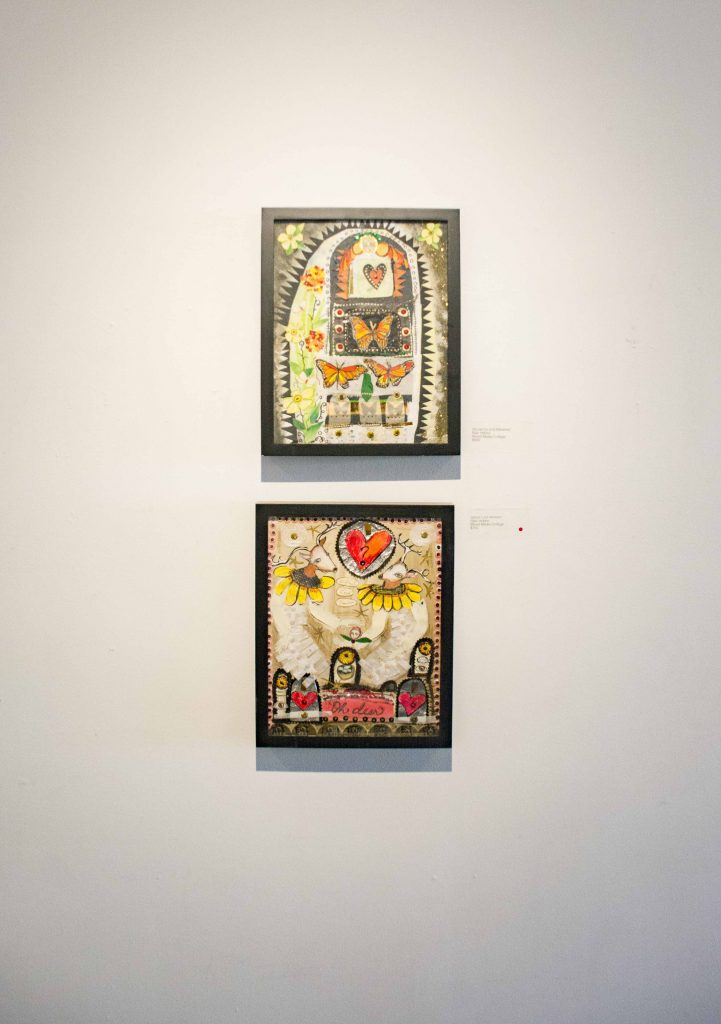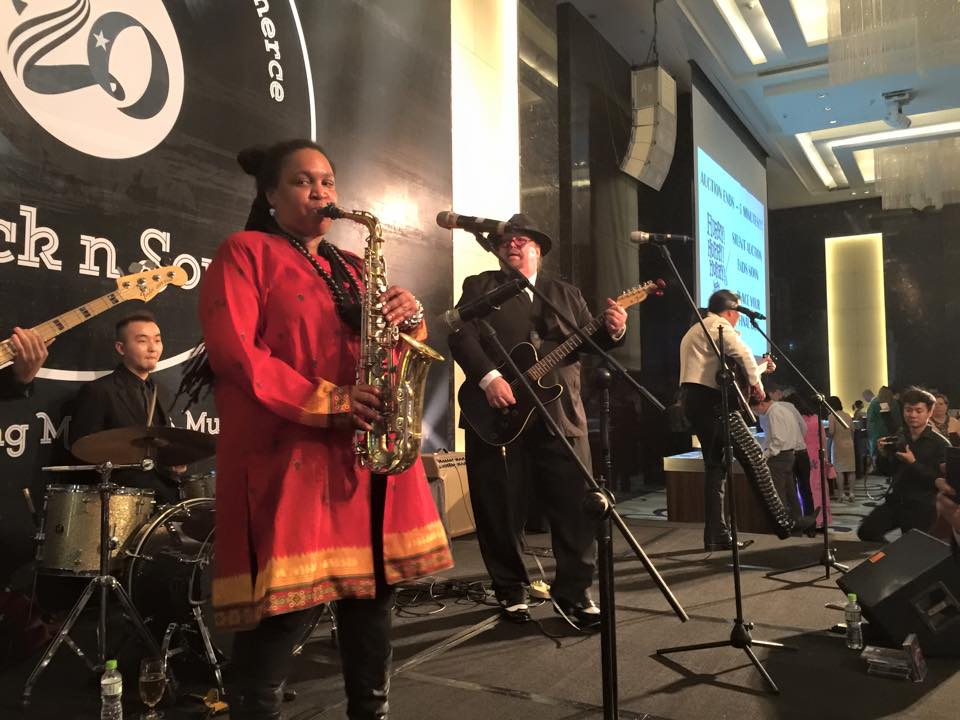Southside Gallery has a new exhibit that will run until Oct. 27 featuring four artists with one theme: “Unnatural History.”
Blair Hobbs, an artist and creative writing professor, has had a show at Southside every other October for more than 22 years now.

This year, she wanted to extend her show to include the works of other artists within the community, specifically Lee Harper, Adrienne Brown-David and Jack Barbera. They each have different styles and messages, but Hobbs said she felt that their pieces could communicate with and complement each other.
“I wanted our work to have a conversation,” Hobbs said. “I was interested in just doing flowers and animals but wanted to do a twist on the theme and call it ‘Unnatural History’ so that I could challenge myself to look at unusual plants and animals.”
As Hobbs began to capture these images in her art, she also learned about the subjects themselves. She studied the Moroccan goats that climb argan trees and the Scythian lamb, also called the vegetable lamb of Tartary, a Central Asian plant of legend that was once believed to grow sheep as its fruit.
“I always like research involved with creative works,” Hobbs said.
Each one of her drawings is a paper cut-out glued or sewn to canvas. She uses acrylic paints, colored pencils, ink, duct tape, candy wrappers and even broken Christmas baubles.
Harper’s style is a little darker, and she is known for her series “History Bones,” in which all pieces are about real people, events or customs. These dioramas of skeletons are equalizing in nature and are therefore able to represent all people no matter race, gender or nationality.
“Lee Harper is a friend of mine and makes work from roadkill,” Hobbs said. “Out in the country, she collects bones, leaves, feathers, snakeskins. She has a macabre sense of humor, but her art is beautiful.”
Harper’s pieces address death and mortality through their use of the skeletal form. She lives in Oxford, and her art plays with human customs and stories, using fragments of the natural world but creating various scenes that are not necessarily found in reality.

Adrienne Brown-David was born in St. Louis and cultivated her interest in art while she was young, working mainly with graphite and drawing at first.
“I had seen Adrienne Brown-David’s work through social media,” Hobbs said. “I was struck by her journal drawings and how gorgeous they were.”
Brown-David moved to St. Croix, U.S. Virgin Islands, and began to focus on painting and mixed media. She now lives in Water Valley.
Originally from Long Island, New York, Jack Barbera was an English professor at Ole Miss from 1976 until he retired in 2011.
“I was over at Jack Barbera’s house one day, and he took me through his ceramics,” Hobbs said. “I was delighted with them. They’re so smart and fun to look at.”
Before and after his retirement, Barbera took ceramics courses. His art is influenced by his experiences studying and teaching literature, and it pulls in history, culture and other artistic works.
“I drew my inspiration from literature but also words,” Barbera said. “I actually wrote words on a number of these pieces. Words specifically convey ideas, but visual art conveys ideas and emotions as well.”
Barbera enjoys the works of Emily Dickinson and, in one of his sculptures, references “There is no Frigate like a Book,” Dickinson’s poem about how books are an escape into imagination that transport the reader to faraway places and fictional realms. Barbera also created a sculpture titled “There is No Howdah Like a Book” in which a woman is sitting atop an elephant within a contraption called a howdah. She is reading a book and swooning, symbolizing that words can transport you more than any actual movement of the physical world.

“Dickinson’s medium was words,” Barbera said. “Imagination, ideas and words are all immaterial, so the medium and the message match. But in terms of my sculpture, you don’t get more material than clay, so there’s a tension between the medium and the message. Oftentimes in my work there’s a tension, but I like that because tensions are creative.”
His two Sphinx jars in the show are titled “The Secret Sits,” referring to a one-couplet poem by Robert Frost. “The Inward Gaze” jar nods to Socrates’ famous admonition, “Know Thyself” and poet Philip Sidney’s instruction, “Look in thy heart, and write.”
“The show is really about an engagement with the natural world,” Hobbs said. “Look at it; find out about it; just don’t pass it by.”
The artists’ reception is at Southside this Friday from 5 to 8 p.m.
















